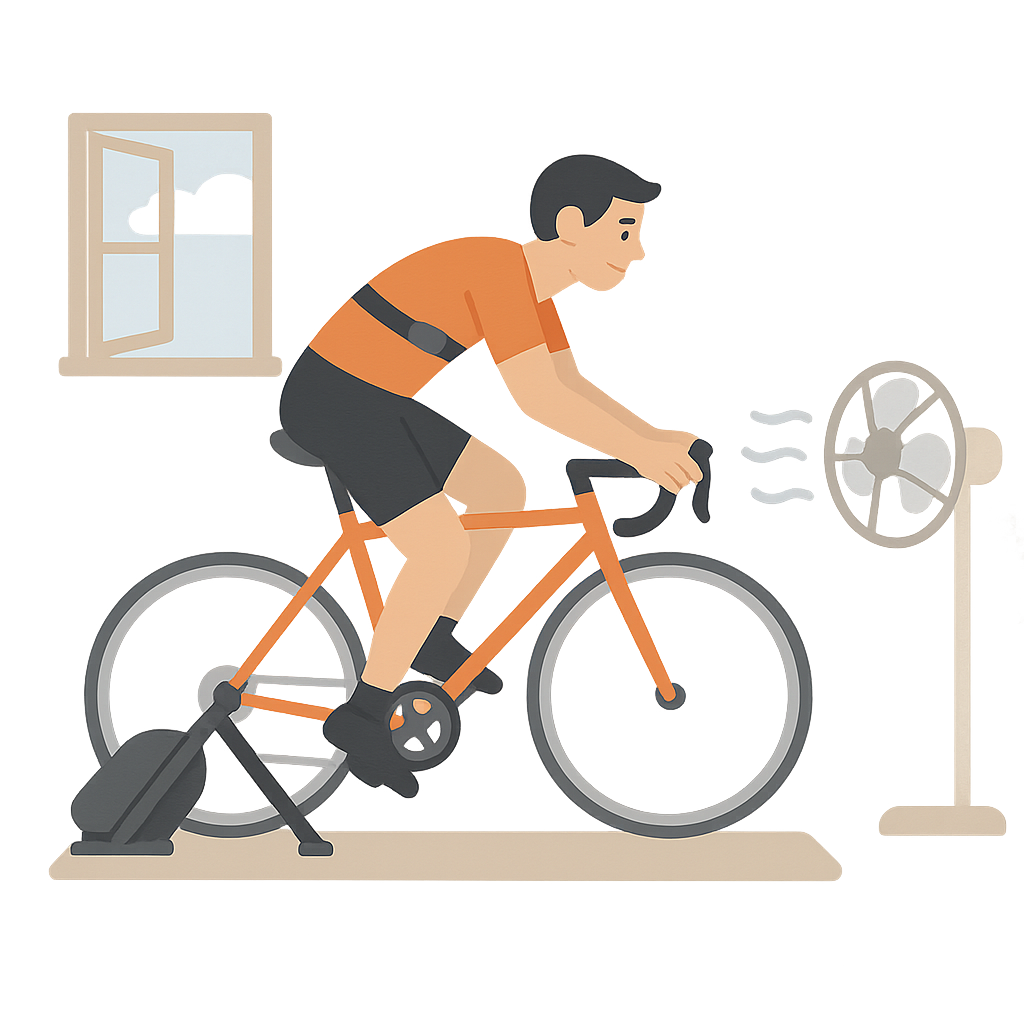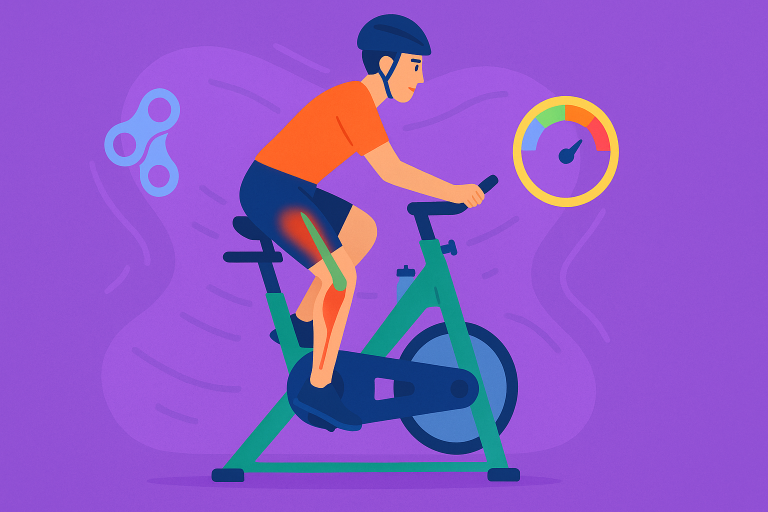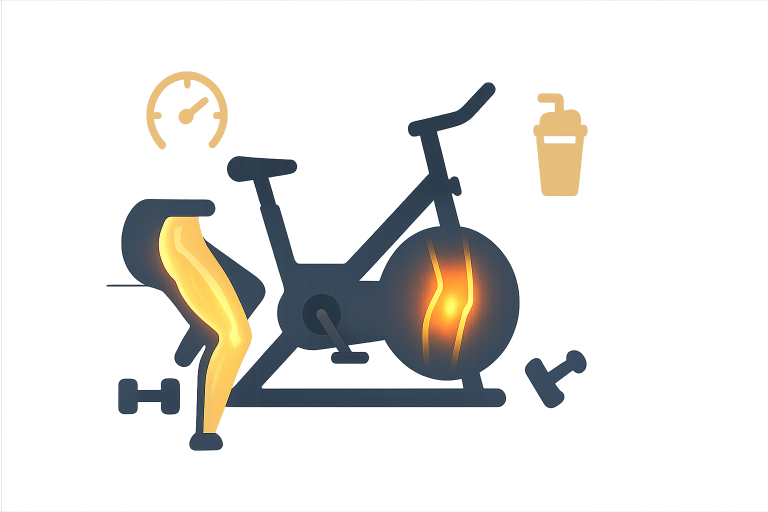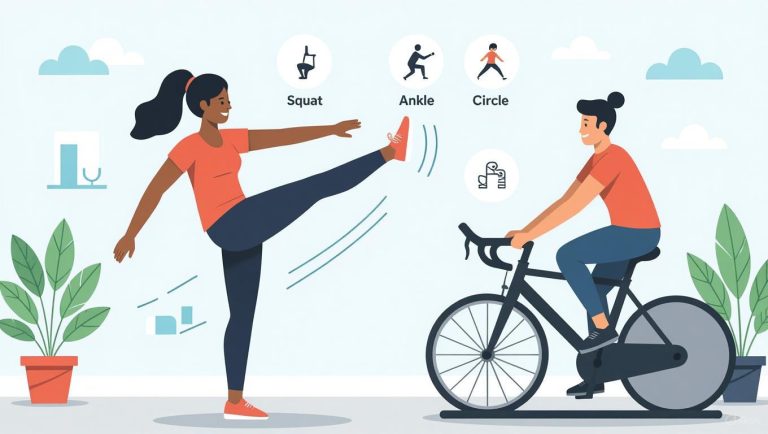How to Stay Motivated for Indoor Cycling Workouts: Your Comprehensive Guide
Getting on your indoor trainer day after day can feel like a real chore. But as a certified personal trainer with over seven years of experience, I’ve learned that a lack of motivation indoor cycling isn’t just about willpower. It’s about creating an environment, systems, and mindset that make success inevitable. This guide will show you how to transform your indoor cycling sessions from dreaded obligations into powerful training tools.
Why Indoor Cycling Can Feel Like a Mental Battle
Indoor rides present unique psychological challenges that outside rides don’t have. There’s no changing scenery to distract you from the burn in your legs, no finish line to chase, and no sense of accomplishment from conquering a steep hill. The lack of external stimuli can make every minute of your indoor workout feel like five.
Understanding the Lack of Motivation Indoor Cycling
The toughest part of an indoor routine isn’t the physical effort; it’s the mental game. Every training session can become a battle against boredom and monotony. This is especially true in the winter months when bad weather keeps us inside for weeks. Your mind can focus entirely on discomfort, making every interval seem endless.
The Science Behind the Struggle: Decision Fatigue
A widely studied idea called decision fatigue explains why motivation often fails. This concept suggests that a person’s willpower depletes as they make countless choices throughout the day. By evening, when many people plan to work out, their mental energy is already spent. This leads to poor choices and creates a strong excuse to skip the session entirely.
I’ve seen clients who were motivated in the morning completely lose steam by 6 p.m. Their brains, exhausted from work decisions, default to the path of least resistance: the couch.
Build the Perfect “Pain Cave”: Your Indoor Training Environment
Your personal “pain cave” can make or break your motivation. After years of helping clients set up their spaces, I’ve learned that the comfort factor of your indoor training environment directly impacts how often you’ll use it.
Essential Gear for Your Setup

A quality smart trainer or smart bike is the foundation of your setup. These new tools provide the resistance and data you need for purposeful training.
- A heart-rate monitor is even more important indoors than outdoors. Without environmental cues like wind resistance or terrain changes, heart rate data helps you gauge your effort accurately.
- Temperature control is key. A good fan creates airflow like the breeze you’d get outdoors. A portable swamp cooler can also help you maintain the ideal ambient temperature for sustained effort.
- Keep an open window when the weather allows. Fresh air prevents that stuffy feeling that makes you want to quit early.
Set the Right Mood
Entertainment can transform a tough indoor workout into an enjoyable one.
- Binge-watch your favorite show. Save episodes of a show you’re dying to watch for trainer sessions only. This makes the workout something you look forward to.
- Create the perfect playlist. Upbeat tracks can push you through tough intervals. Create separate playlists for different workout types, such as high-intensity or endurance rides.
- Mood lighting can make a difference. Softer lighting or even colored LED strips can turn a corner of your living room into an inviting training space.
The Mental Game: Psychological Strategies to Stay Motivated
The physical setup is only half the battle; the other half happens in your mind. These mental strategies have helped my clients push through when their bodies wanted to quit.
How to Set and Track Your Goals
| Goal Type | Example | Benefit for Motivation |
|---|---|---|
| Long-Term | Train for a century ride | Provides a big-picture purpose |
| Short-Term | Improve FTP test results this month | Offers quick wins to sustain engagement |
| Session-Specific | Complete a 30-min recovery ride | Eliminates aimless pedaling with focus |
You must set goals with extreme clarity. Vague intentions won’t sustain you through tough sessions.
- Distinguish between long-term and short-term goals. A long-term cycling goal might be training for a century ride, while a short-term goal could be improving your FTP test results this month.
- Every session needs a specific goal. Recovery rides might focus on easy spinning, while interval workouts target specific power zones. This approach eliminates the lack of inspiration that comes from aimless pedaling.
- Use a training plan. The most effective way to maintain motivation indoor cycling is by seeing progress. Training plans provide structure and measurable improvements that keep you engaged week after week.
Master Your Mindset
A small reward and celebrating little wins can have a big impact.
- Reward yourself. Celebrate completing a session with something you enjoy, like a special coffee or a favorite snack.
- Focus on small wins. Instead of focusing on big improvements, celebrate the small ones. Did you complete that tough interval? That’s a win. Did you stay on the bike for your full planned duration? Another win.
- Shift your perspective. Change your mindset from simply surviving trainer time to optimizing every minute. A purposeful ride is always better than mindlessly pedaling.
The Social Factor: Connect with the Indoor Cycling Community
Humans are social creatures, and isolation can kill motivation faster than physical discomfort. Building connections can transform a solitary activity into a shared experience.
Virtual Worlds and Group Rides

Indoor training software like Zwift and Rouvy have gamified indoor cycling. These platforms allow you to:
- Join a virtual ride with cyclists from around the world. The social interaction and visual stimulation can make the ride more enjoyable.
- Participate in a virtual race. These events provide goal-oriented thoughts with the excitement of competition, even from your garage.
- Take online spin classes. The energy of a good spin instructor can push you through intervals you’d never complete alone.
Staying Accountable
Social media can be a powerful motivational tool when used strategically.
- Share your progress. Post about your workouts or milestones. The accountability and encouragement from others can provide a boost when your internal drive falters.
- Connect with other cyclists. The support you give and receive from others builds a motivational network that extends beyond your four walls.
- Organize your own virtual rides with friends via video calls. Suffering together, even virtually, makes the pain more bearable.
Structured Workouts: Making Every Ride Count
Random pedaling wastes time and motivation. A structured plan turns every session into progress toward your goals.
Building a Powerful Training Plan
A well-designed plan provides clarity about what you’re doing and why.
- Train with purpose. Understanding your FTP test results and lactate threshold helps you train in the right zones. These numbers eliminate guesswork and ensure every minute serves a purpose.
- Balance intensity with recovery. Your body needs both stress and recovery to adapt. Many cyclists make the mistake of going hard every session, which can lead to burnout and declining performance.
Avoiding Common Mistakes
Indoor training is different from outdoor training. You can’t coast downhill or get pushed by a tailwind. Every pedal stroke requires effort.
- Adjust your expectations. What feels sustainable outdoors might be too intense for sustained indoor efforts. Focus on making every session count. A quality ride with a proper warm-up, structured intervals, and a cool-down is always better than aimless pedaling.
- Maintain a consistent routine. A consistent setup, time, and structure reduces decision fatigue and makes each session feel automatic.
Your Action Plan for Motivation
Success comes from combining all these elements into a system that works for your life and schedule.
Prepare for Tomorrow, Today
Take these exact steps to set yourself up for success the night before:
- Lay out your cycling clothes.
- Charge your devices.
- Queue up your entertainment on one of your favorite entertainment platforms.
- Set your indoor trainer to the right resistance.
A prepared mind eliminates morning decision fatigue. When everything is ready, you just have to show up and pedal.
The Formula for Staying Motivated
Your indoor cycling experience becomes a powerful asset when you combine the right environment, clear goals, social connections, and structured workouts.
- Start with your setup. Make your space comfortable and inviting.
- Add structure. Plan your workouts to align with your goals.
- Connect with others. Find accountability and support in the cycling community.
- Celebrate progress. Acknowledge your small wins and learn from setbacks.
The best way to maintain motivation indoor cycling is to remember that consistency beats perfection. Missing one session doesn’t matter, but missing a week can start a dangerous pattern. With the right approach, indoor cycling sessions can be the foundation of your fitness, keeping you strong and ready for the open road.






